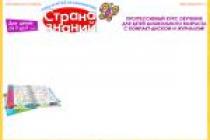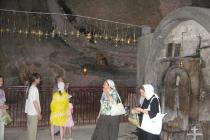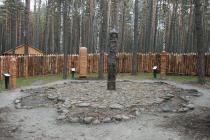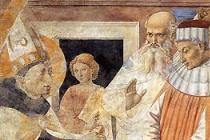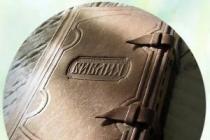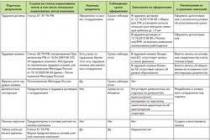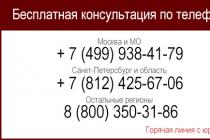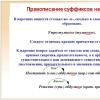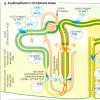On December 26, 1825, the Decembrist uprising broke out in St. Petersburg. If you peel away the husks of Soviet mythology, you can see a lot of interesting things.
The king is not real
In fact, the coup d'état took place not on December 26, but on November 27, 1825. On this day in St. Petersburg, the death of Emperor Alexander in Taganrog was announced and Konstantin Pavlovich, second in seniority after the childless Alexander, was named the new emperor. The Senate, the State Council and the entire capital hastily swore the oath to him. True, Constantine had no rights to the throne, since back in 1823 he abdicated the throne in favor of Nicholas, which was also formalized in Alexander’s spiritual will. Nikolai also took the oath to Konstantin under pressure from the military governor Mikhail Miloradovich.
However, on December 3, Constantine renounced the crown. Either everyone in St. Petersburg decided to change their game, or Konstantin was afraid that he might share the fate of his father Paul I, he allegedly said: “They will strangle you, just like they strangled your father.” Nicholas was declared the legal heir to the throne. Everything, of course, happened in an atmosphere of the strictest secrecy and gave rise to a lot of rumors.
Who's pulling the strings
The oath of office to the new emperor was scheduled for December 14 (26). The Decembrists, who had not previously shown themselves in any way, timed their performance to coincide with the same date. They did not have a clear program, the idea was this: to bring the regiments to Senate Square that day in order to prevent the oath of allegiance to Nicholas. The main conspirator, Prince Sergei Trubetskoy, who was appointed “dictator,” did not come to the square at all: it is quite possible that the appointment occurred retroactively. There was practically no coordination, Kondraty Ryleev rushed around St. Petersburg, “like a sick man in his restless bed,” everything was done at random. Quite strange for a secret society that operated for several years, covered a significant part of the military elite and had an extensive network throughout the country.
Orange technologies
Classic technologies were used to withdraw troops; today they would be called orange. Thus, Alexander Bestuzhev, having arrived at the barracks of the Moscow regiment, already ready to take the oath, began to assure the soldiers that they were being deceived, that Tsarevich Konstantin had never abdicated the throne and would soon be in St. Petersburg, that he was his adjutant - and was sent forward by him on purpose and etc. Having enticed the soldiers in this way, he led them to Senate Square. Believing this deception, other regiments entered the square. At the same time, thousands of people gathered there, near the embankment of St. Isaac's Cathedral. It was easier to work with the common people: they spread a rumor that the legitimate Emperor Constantine was already on his way to St. Petersburg from Warsaw and was taken under arrest near Narva, but soon his troops would free him. And soon the excited crowd shouted: “Hurray, Konstantin!”
Provocateurs
Meanwhile, regiments loyal to Emperor Nicholas arrived on the square. A confrontation arose: on the one hand, the rebels and the incited people, on the other, the defenders of the new emperor. Trying to persuade the rebels to return to the officers' barracks, the crowd threw logs from a dismantled woodpile near St. Isaac's Cathedral. One of the rebels, the hero of the Caucasian War Yakubovich, who came to Senateskaya and was appointed commander of the Moscow regiment, cited a headache and disappeared from the square. Then he stood for several hours in the crowd surrounding the emperor, and then approached him and asked permission to personally persuade the rebels to lay down their arms. Having received consent, he went to the chain as a truce and, approaching V. Kuchelbecker, said in an undertone: “Hold on, they are severely afraid of you.” After which he left. Today on the Maidan he would be considered a titushka.
"Noble" shot
However, things soon came to clashes. General Miloradovich also went to the rebels for negotiations and was killed by a shot from Kakhovsky. The hero Kakhovsky, if you look at him through a magnifying glass, turns out to be a very interesting person. A Smolensk landowner, lost to smithereens, he came to St. Petersburg in the hope of finding a rich bride, but he failed. By chance he met Ryleev, and he drew him into a secret society. Ryleev and other comrades supported him in St. Petersburg at their own expense. And when the time came to pay the benefactors’ bills, Kakhovsky, without hesitation, fired. After this, it became clear that it would no longer be possible to reach an agreement.
Senseless and merciless
In Soviet times, a myth was created about the unfortunate Decembrist sufferers. But for some reason no one is talking about the real victims of this senseless riot. While few were killed among the members of the secret societies who stirred up this mess, the buckshot was felt by the common people and the soldiers drawn into the massacre. Taking advantage of the indecision of the rebels, Nikolai managed to transfer artillery, shot at the rebels with grapeshot, people and soldiers scattered, many fell through the ice and drowned while trying to cross the Neva. The result is deplorable, among those killed: from among the mob - 903, minors - 150, women - 79, lower ranks of soldiers - 282 people.
Everything is secret...
Recently, the following version of the reasons for the rebellion has been gaining momentum. If you look closely, all the threads lead to Konstantin, in whom you can see the true customer. The Decembrist revolutionaries, who kept papers in their desks about the reconstruction of Russia, the adoption of a constitution and the abolition of serfdom, for some reason began to force the soldiers to swear allegiance to Constantine. Why did people opposed to the monarchy do this? Maybe because they were directed by someone who benefited from it. It is no coincidence that Nikolai, having begun the investigation into the uprising, and he was personally present during the interrogations, said that they should not look for the guilty, but give everyone the opportunity to justify themselves. He probably knew who was behind this, and did not want to wash his dirty laundry in public. Well, one more conspiracy theory and eloquent fact. As soon as Konstantin left Warsaw after the next Polish uprising and ended up in Vitebsk, he suddenly fell ill with cholera and died a few days later.
Decembrist revolt
Prerequisites
The conspirators decided to take advantage of the complex legal situation that had developed around the rights to the throne after the death of Alexander I. On the one hand, there was a secret document confirming the long-standing renunciation of the throne by the brother next to the childless Alexander in seniority, Konstantin Pavlovich, which gave an advantage to the next brother, who was extremely unpopular among the highest military-bureaucratic elite to Nikolai Pavlovich. On the other hand, even before the opening of this document, Nikolai Pavlovich, under pressure from the Governor-General of St. Petersburg, Count M.A. Miloradovich, hastened to renounce his rights to the throne in favor of Konstantin Pavlovich.
On November 27, the population swore an oath to Constantine. Formally, a new emperor appeared in Russia; several coins with his image were even minted. But Constantine did not accept the throne, but also did not formally renounce it as emperor. An ambiguous and extremely tense interregnum situation was created. Nicholas decided to declare himself emperor. The second oath, the “re-oath,” was scheduled for December 14. The moment the Decembrists had been waiting for had arrived - a change of power. The members of the secret society decided to speak out, especially since the minister already had a lot of denunciations on his desk and arrests could soon begin.
The state of uncertainty lasted for a very long time. After the repeated refusal of Konstantin Pavlovich from the throne, the Senate, as a result of a long night meeting on December 13-14, 1825, recognized the legal rights to the throne of Nikolai Pavlovich.
The plans of the conspirators. Southern and Northern societies negotiated on coordination of actions and established contacts with the Polish Patriotic Society and the Society of United Slavs. The Decembrists planned to kill the Tsar at a military review, seize power with the help of the Guard and realize their goals. The performance was scheduled for the summer of 1826. However, on November 19, 1825, Alexander I suddenly died in Taganrog. The throne was supposed to pass to the deceased’s brother Konstantin, because Alexander had no children. But back in 1823, Constantine secretly abdicated the throne, which now, according to the law, passed to the next senior brother - Nicholas. Unaware of Constantine's abdication, the Senate, guard and army swore allegiance to him on November 27. After clarifying the situation, they re-sworn the oath to Nikolai, who, due to his personal qualities (pettiness, martinet, vindictiveness, etc.) was not liked in the guard. Under these conditions, the Decembrists had the opportunity to take advantage of the sudden death of the tsar, the fluctuations in power that found themselves in an interregnum, as well as the hostility of the guard towards the heir to the throne. It was also taken into account that some senior dignitaries took a wait-and-see attitude towards Nicholas and were ready to support active actions directed against him. In addition, it became known that the Winter Palace knew about the conspiracy and arrests of members of the secret society, which in fact had ceased to be secret, could soon begin.
In the current situation, the Decembrists planned to raise the Guards regiments, gather them on Senate Square and force the Senate “good” or at the threat of arms to publish a “Manifesto to the Russian People,” which proclaimed the destruction of the autocracy, the abolition of serfdom, the establishment of a Provisional Government, political freedoms, etc. Some of the rebels were supposed to capture the Winter Palace and arrest the royal family, and it was planned to capture the Peter and Paul Fortress. In addition, P.G. Kakhovsky took upon himself the task of killing Nikolai before the start of the speech, but never decided to carry it out. Prince S.P. was elected leader of the uprising (“dictator”). Trubetskoy.
Uprising plan
The Decembrists decided to prevent the troops and the Senate from taking the oath to the new king. The rebel troops were supposed to occupy the Winter Palace and the Peter and Paul Fortress, the royal family was planned to be arrested and, under certain circumstances, killed. A dictator, Prince Sergei Trubetskoy, was elected to lead the uprising.
After this, it was planned to demand that the Senate publish a national manifesto, which would proclaim the “destruction of the former government” and the establishment of a Provisional Revolutionary Government. It was supposed to make Count Speransky and Admiral Mordvinov its members (later they became members of the trial of the Decembrists).
Deputies had to approve a new fundamental law - the constitution. If the Senate did not agree to publish the people's manifesto, it was decided to force it to do so. The manifesto contained several points: the establishment of a provisional revolutionary government, the abolition of serfdom, equality of all before the law, democratic freedoms (press, confession, labor), the introduction of jury trials, the introduction of compulsory military service for all classes, the election of officials, the abolition of the poll tax.
After this, a National Council (Constituent Assembly) was to be convened, which was supposed to decide on the form of government - a constitutional monarchy or a republic. In the second case, the royal family would have to be exiled abroad. In particular, Ryleev proposed exiling Nicholas to Fort Ross. However, then the plan of the “radicals” (Pestel and Ryleev) involved the murder of Nikolai Pavlovich and, possibly, Tsarevich Alexander. [source not specified 579 days]
Progress of the uprising. From the early morning of December 14, officers-members of the “Northern Society” campaigned among soldiers and sailors, convincing them not to swear allegiance to Nicholas, but to support Konstantin and “his wife “Constitution”.” They managed to bring part of the Moscow, Grenadier regiments and the Guards naval crew to Senate Square (about 3.5 thousand people in total). But by this time the senators had already sworn allegiance to Nicholas and dispersed. Trubetskoy, observing the implementation of all parts of the plan, saw that it was completely disrupted and, convinced of the doom of the military action, did not appear on the square. This in turn caused confusion and slowness of action.
Nicholas surrounded the square with troops loyal to him (12 thousand people, 4 guns). But the rebels repulsed the cavalry attacks, and Governor-General Miloradovich, who tried to persuade the rebels to surrender their weapons, was mortally wounded by Kakhovsky. After this, artillery was brought into action. The protest was suppressed, and in the evening mass arrests began.
Uprising in Ukraine. In the South, they learned about the events in the capital belatedly. On December 29, the Chernigov regiment led by S. Muravyov-Apostol rebelled, but it was not possible to raise the entire army. On January 3, the regiment was defeated by government forces.
In details
Ryleev asked Kakhovsky early in the morning of December 14 to enter the Winter Palace and kill Nikolai. Kakhovsky initially agreed, but then refused. An hour after the refusal, Yakubovich refused to lead the sailors of the Guards crew and the Izmailovsky regiment to the Winter Palace.
On December 14, officers - members of the secret society were still in the barracks after dark and campaigned among the soldiers. By 11 a.m. on December 14, 1825, the Moscow Guards Regiment entered Senate Square. By 11 a.m. on December 14, 1825, 30 Decembrist officers brought about 3,020 people to Senate Square: soldiers of the Moscow and Grenadier regiments and sailors of the Guards naval crew.
However, a few days before this, Nikolai was warned about the intentions of the secret societies by the chief of the General Staff I. I. Dibich and the Decembrist Ya. I. Rostovtsev (the latter considered the uprising against the tsar incompatible with noble honor). At 7 o'clock in the morning, the senators took the oath to Nicholas and proclaimed him emperor. Trubetskoy, who was appointed dictator, did not appear. The rebel regiments continued to stand on Senate Square until the conspirators could come to a common decision on the appointment of a new leader.
Inflicting a mortal wound on M. A. Miloradovich on December 14, 1825. Engraving from a drawing belonging to G. A. Miloradovich
Hero of the Patriotic War of 1812, St. Petersburg military governor-general, Count Mikhail Miloradovich, appearing on horseback in front of the soldiers lined up in a square, “said that he himself willingly wanted Constantine to be emperor, but what to do if he refused: he assured them that he himself saw the new renunciation and persuaded them to believe it.” E. Obolensky, leaving the ranks of the rebels, convinced Miloradovich to drive away, but seeing that he was not paying attention to this, he easily wounded him in the side with a bayonet. At the same time, Kakhovsky shot the Governor General with a pistol (the wounded Miloradovich was taken to the barracks, where he died that same day). Colonel Sturler and Grand Duke Mikhail Pavlovich tried unsuccessfully to bring the soldiers into obedience. Then the rebels twice repulsed the attack of the Horse Guards led by Alexei Orlov.
A large crowd of St. Petersburg residents gathered on the square and the main mood of this huge mass, which, according to contemporaries, numbered in tens of thousands of people, was sympathy for the rebels. They threw logs and stones at Nicholas and his retinue. Two “rings” of people were formed - the first consisted of those who came earlier, it surrounded the square of the rebels, and the second ring was formed of those who came later - their gendarmes were no longer allowed into the square to join the rebels, and they stood behind the government troops who surrounded the rebel square. Nikolai, as can be seen from his diary, understood the danger of this environment, which threatened great complications. He doubted his success, “seeing that the matter was becoming very important, and not yet foreseeing how it would end.” It was decided to prepare crews for members of the royal family for a possible escape to Tsarskoe Selo. Later, Nikolai told his brother Mikhail many times: “The most amazing thing in this story is that you and I weren’t shot then.” [source not specified 579 days]
Nicholas sent Metropolitan Seraphim and Kyiv Metropolitan Eugene to persuade the soldiers. But in response, according to the testimony of Deacon Prokhor Ivanov, the soldiers began shouting to the metropolitans: “What kind of metropolitan are you, when in two weeks you swore allegiance to two emperors... We don’t believe you, go away!..” The metropolitans interrupted the soldiers’ conviction when the Life Guards appeared on the square Grenadier Regiment and Guards Crew, under the command of Nikolai Bestuzhev and the Decembrist Lieutenant Arbuzov.
But the gathering of all the rebel troops occurred only more than two hours after the start of the uprising. An hour before the end of the uprising, the Decembrists elected a new “dictator” - Prince Obolensky. But Nicholas managed to take the initiative into his own hands, and the encirclement of the rebels by government troops, more than four times larger than the rebels in numbers, was already completed. In total, 30 Decembrist officers brought about 3,000 soldiers to the square. According to Gabaev’s calculations, 9 thousand infantry bayonets, 3 thousand cavalry sabers were collected against the rebel soldiers, in total, not counting the artillerymen called up later (36 guns), at least 12 thousand people. Because of the city, another 7 thousand infantry bayonets and 22 cavalry squadrons, that is, 3 thousand sabers, were called up and stopped at the outposts as a reserve, that is, in total, another 10 thousand people stood in reserve at the outposts.
Nikolai was afraid of the onset of darkness, since most of all he feared that “the excitement would not be communicated to the mob,” which could become active in the dark. Guards artillery appeared from the Admiralteysky Boulevard under the command of General I. Sukhozanet. A volley of blank charges was fired at the square, which had no effect. Then Nikolai ordered to shoot with grapeshot. The first salvo was fired above the ranks of the rebel soldiers - at the “mobs” on the roof of the Senate building and the roofs of neighboring houses. The rebels responded to the first volley of grapeshot with rifle fire, but then they began to flee under a hail of grapeshot. According to V.I. Shteingel: “It could have been limited to this, but Sukhozanet fired a few more shots along the narrow Galerny Lane and across the Neva towards the Academy of Arts, where more of the curious crowd fled!” Crowds of rebel soldiers rushed onto the Neva ice to move to Vasilyevsky Island. Mikhail Bestuzhev tried to again form soldiers into battle formation on the ice of the Neva and go on the offensive against the Peter and Paul Fortress. The troops lined up, but were fired at by cannonballs. The cannonballs hit the ice and it split, many drowned.
Arrest and trial
Main article: Trial of the Decembrists
By nightfall the uprising was over. Hundreds of corpses remained in the square and streets. Based on the papers of the official of the III Department, M. M. Popov, N. K. Shilder wrote: After the cessation of artillery fire, Emperor Nikolai Pavlovich ordered the Chief of Police, General Shulgin, that the corpses be removed by morning. Unfortunately, the perpetrators acted in the most inhumane manner. On the night on the Neva, from the Isaac Bridge to the Academy of Arts and further to the side of Vasilievsky Island, many ice holes were made, into which not only corpses were lowered, but, as they claimed, also many wounded, deprived of the opportunity to escape from the fate that awaited them. Those of the wounded who managed to escape hid their injuries, afraid to open up to doctors, and died without medical care.
371 soldiers of the Moscow Regiment, 277 of the Grenadier Regiment and 62 sailors of the Sea Crew were immediately arrested and sent to the Peter and Paul Fortress. The arrested Decembrists were brought to the Winter Palace. Emperor Nicholas himself acted as an investigator.
By decree of December 17, 1825, a Commission was established for research into malicious societies, chaired by Minister of War Alexander Tatishchev. On May 30, 1826, the investigative commission presented Emperor Nicholas I with a report compiled by D. N. Bludov. The manifesto of June 1, 1826 established the Supreme Criminal Court of three state estates: the State Council, the Senate and the Synod, with the addition of “several persons from the highest military and civil officials.” A total of 579 people were involved in the investigation. On July 13, 1826, Kondraty Ryleev, Pavel Pestel, Sergei Muravyov-Apostol, Mikhail Bestuzhev-Ryumin, and Pyotr Kakhovsky were hanged on the roof of the Peter and Paul Fortress. 121 Decembrists were exiled to Siberia for hard labor or settlement.
Reasons for the defeat of the Decembrist uprising
Narrow social base, orientation towards military revolution and conspiracy.
Insufficient secrecy, as a result of which the government knew about the plans of the conspirators.
Lack of necessary unity and coordination of actions;
The unpreparedness of the majority of educated society and the nobility for the elimination of autocracy and serfdom;
Cultural and political backwardness of the peasantry and the rank and file of the army.
Historical meaning
Having been defeated in the socio-political struggle, the Decembrists won a spiritual and moral victory, showed an example of true service to their fatherland and people, and contributed to the formation of a new moral personality.
The experience of the Decembrist movement became the subject of reflection for the fighters against autocracy and serfdom that followed them, and influenced the entire course of the Russian liberation movement.
The Decembrist movement had a huge impact on the development of Russian culture.
However, based on the specific historical situation, the defeat of the Decembrists weakened the intellectual potential of Russian society, provoked an increase in government reaction, and delayed, according to P.Ya. Chaadaev, development of Russia for 50 years.
In politics, as in all public life, not to move forward means to be thrown back.
Lenin Vladimir Ilyich
The Decembrist uprising on Senate Square took place on December 14, 1825 in St. Petersburg. This was one of the first well-organized uprisings in the Russian Empire. It was directed against the strengthening of the power of the autocracy, as well as against the enslavement of ordinary people. The revolutionaries promoted an important political thesis of that era - the abolition of serfdom.
Background to the 1825 uprising
Even during the life of Alexander 1, revolutionary movements in Russia actively worked to create conditions that would limit the power of the autocrat. This movement was quite massive and was preparing to carry out a coup at the moment of weakening of the monarchy. The imminent death of Emperor Alexander 1 forced the conspirators to become more active and begin their performance earlier than planned.
This was facilitated by the difficult political situation within the Empire. As you know, Alexander 1 did not have children, which means that difficulty with an heir was inevitable. Historians talk about a secret document according to which the elder brother of the murdered ruler, Konstantin Pavlovich, long ago abandoned the throne. There was only one heir - Nikolai. The problem was that on November 27, 1825, the population of the country swore an oath to Constantine, who formally became emperor from that day, although he himself did not accept any authority to govern the country. Thus, situations arose in the Russian Empire when there was no actual ruler. As a result, the Decembrists became more active, realizing that they would no longer have such an opportunity. That is why the Decembrist uprising of 1825 happened on Senate Square, in the capital of the country. The day chosen for this was also significant - December 14, 1825, the day when the whole country had to swear allegiance to the new ruler, Nicholas.
What was the plan of the Decembrist uprising?
The ideological inspirers of the Decembrist uprising were the following people:

- Alexander Muravyov - the creator of the union
- Sergei Trubetskoy
- Nikita Muravyov
- Ivan Yakushin
- Pavel Pestel
- Kondraty Ryleev
- Nikolai Kakhovsky
There were other active participants in secret societies who took an active part in the coup, but it was these people who were the leaders of the movement. The general plan of their actions on December 14, 1825 was as follows - to prevent the Russian armed forces, as well as state authorities, represented by the Senate, from taking the oath of allegiance to Emperor Nicholas. For these purposes, it was planned to do the following: capture the Winter Palace and the entire royal family. This would transfer power into the hands of the rebels. Sergei Trubetskoy was appointed head of the operation.
In the future, the secret societies planned to create a new government, adopt the country's constitution and proclaim democracy in Russia. In fact, it was about creating a republic, from which the entire royal family was to be expelled. Some Decembrists went even further in their plans and proposed killing everyone related to the ruling dynasty.
Decembrist uprising of 1825, December 14
The Decembrist uprising began in the early morning of December 14th. However, initially everything did not go as they planned and the leaders of the secret movements had to improvise. It all started with the fact that Kakhovsky, who had previously confirmed that he was ready to enter Nikolai’s chambers early in the morning and kill him, refused to do so. After the first local failure, a second one followed. This time Yakubovich, who was supposed to send troops to storm the Winter Palace, also refused to do so.
It was too late to retreat. Early in the morning, the Decembrists sent their agitators to the barracks of all units in the capital, who called on the soldiers to go to Senate Square and oppose the autocracy in Russia. As a result, it was possible to bring to the square:
- 800 soldiers of the Moscow Regiment
- 2350 sailors of the Guards crew

By the time the rebels were brought to the square, the senators had already taken the oath to the new emperor. This happened at 7 o'clock in the morning. Such haste was necessary because Nicholas was warned that a major uprising was expected against him in order to disrupt the oath.
The Decembrist uprising on the senatorial square began with the fact that the troops opposed the candidacy of the emperor, believing that Constantine had more rights to the throne. Mikhail Miloradovich personally came out to the rebels. This is a famous man, a general in the Russian army. He called on the soldiers to leave the square and return to the barracks. He personally showed a manifesto in which Constantine renounced the throne, which means that the current emperor has all the rights to the throne. At this time, one of the Decembrists, Kokhovsky, approached Miloradovich and shot him. The general died that same day.
After these events, the Horse Guards, commanded by Alexey Orlov, were sent to attack the Decembrists. Twice this commander tried unsuccessfully to suppress the rebellion. The situation was aggravated by the fact that ordinary residents who shared the views of the rebels came to the Senate Square. In total, the total number of Decembrists numbered several tens of thousands. There was real madness going on in the center of the capital. The tsarist troops hastily prepared crews for the evacuation of Nicholas and his family to Tsarskoye Selo.
Emperor Nicholas hurried his generals to resolve the issue before nightfall. He was afraid that the Decembrist uprising on Senate Square would be taken up by the mob and other cities. Such mass participation could cost him the throne. As a result, artillery was brought to Senate Square. Trying to avoid mass casualties, General Sukhozanet gave the order to shoot with blanks. This did not give any results. Then the Emperor of the Russian Empire personally gave the order to shoot with combat and grapeshot. However, at the initial stage this only aggravated the situation, as the rebels returned fire. After this, a massive attack was carried out on the area, which sowed panic and forced the revolutionaries to flee.

Consequences of the 1825 uprising
By the night of December 14, the excitement was over. Many of the uprising activists were killed. Senate Square itself was littered with corpses. State archives provide the following data on those killed on both sides that day:
- Generals – 1
- Staff officers – 1
- Officers of various ranks – 17
- Life Guard soldiers - 282
- Common soldiers – 39
- Women – 79
- Children – 150
- Ordinary people – 903
The total number of victims is simply enormous. Never before has Russia seen such mass movements. In total, the Decembrist uprising of 1805, which took place on Senate Square, cost the lives of 1,271 people.
In addition, on the night of December 14, 1825, Nicholas issues a decree on the arrest of the most active participants in the movement. As a result, 710 people were sent to prison. Initially, everyone was taken to the Winter Palace, where the emperor personally led the investigation into this case.
The Decembrist uprising of 1825 was the first major popular movement. Its failures lay in the fact that it was largely spontaneous in nature. The organization of the uprising was weak, and the involvement of the masses in it was practically non-existent. As a result, only the small number of Decembrists allowed the Emperor to suppress the rebellion in a short time. However, this was the first signal that there was an active movement against the government in the country.
And the subsequent foreign campaigns of the Russian army had a significant impact on all aspects of the life of the Russian Empire, giving rise to certain hopes for changes for the better and, first of all, for the abolition of serfdom. The elimination of serfdom was associated with the need for constitutional restrictions on monarchical power. In 1814, communities of guards officers emerged on an ideological basis, the so-called “artels”. From two artels: the “Sacred” and the “Semyonovsky Regiment”, the Union of Salvation was formed in St. Petersburg at the beginning of 1816. The founder of the Union was Alexander Muravyov. The Salvation Union included Sergei Trubetskoy, Nikita Muravyov, Ivan Yakushkin, and later Pavel Pestel joined them. The Union's goal was the liberation of the peasants and the reform of government. In 1817, Pestel wrote the charter of the Union of Salvation or the Union of True and Faithful Sons of the Fatherland. Many members of the Union were members of Masonic lodges, so the influence of Masonic rituals was felt in the life of the Union. Disagreements among society members over the possibility of regicide during a coup d'etat led to the dissolution of the Salvation Union in the fall of 1817. In January 1818, a new secret society was created in Moscow - the Union of Welfare. The first part of the company's charter was written by M. N. Muravyov, P. Koloshin, N. M. Muravyov and S.P. Trubetskoy and contained the principles of organizing the Union of Welfare and its tactics. The second part, secret, contained a description of the ultimate goals of society, was compiled later and has not survived. The union lasted until 1821 and included about 200 people. One of the goals of the Welfare Union was to create progressive public opinion and form a liberal movement. For this purpose, it was planned to found various legal societies: literary, charitable, educational. In total, more than ten boards of the Union of Welfare were formed: two in Moscow; in St. Petersburg in the regiments: Moscow, Yeger, Izmailovsky, Horse Guards; councils in Tulchin, Chisinau, Smolensk and other cities. “Side councils” also arose, including Nikita Vsevolozhsky’s “Green Lamp”. Members of the Welfare Union were required to take an active part in public life and strive to occupy positions in government agencies and the army. The composition of secret societies was constantly changing: as their first participants “settled” in life and started families, they moved away from politics; their place was taken by younger ones. In January 1821, the Congress of the Welfare Union worked in Moscow for three weeks. Its necessity was due to disagreements between supporters of the radical (republican) and moderate movements and the strengthening of the reaction in the country, complicating the legal work of society. The work of the congress was led by Nikolai Turgenev and Mikhail Fonvizin. It became known that through informers the government was aware of the existence of the Union. A decision was made to formally dissolve the Welfare Union. This made it possible to free ourselves from random people who ended up in the Union; its dissolution was a step towards reorganization.
New secret societies were formed - “Southern” (1821) in Ukraine and “Northern” (1822) with a center in St. Petersburg. In September 1825, the Society of United Slavs, founded by the Borisov brothers, joined the Southern Society.
In the Northern society, the main role was played by Nikita Muravyov, Trubetskoy, and later by the famous poet Kondraty Ryleev, who rallied the fighting Republicans around himself. The leader of the Southern Society was Colonel Pestel.
Guards officers Ivan Nikolaevich Gorstkin, Mikhail Mikhailovich Naryshkin, naval officers Nikolai Alekseevich Chizhov, brothers Bodisko Boris Andreevich and Mikhail Andreevich took an active part in the Northern society. Active participants in the Southern Society were the Tula Decembrists brothers Kryukov, Alexander Alexandrovich and Nikolai Alexandrovich, the Bobrishchev-Pushkin brothers Nikolai Sergeevich and Pavel Sergeevich, Alexey Ivanovich Cherkasov, Vladimir Nikolaevich Likharev, Ivan Borisovich Avramov. One of the active figures in the “Society of United Slavs” was Ivan Vasilyevich Kireev.
As is clear from the revelations of the surviving Decembrists many years later, they wanted to raise an armed uprising among the troops, overthrow the autocracy, abolish serfdom and popularly adopt a new state law - a revolutionary constitution.
It was planned to announce the “destruction of the former government” and the establishment of a Provisional Revolutionary Government. The abolition of serfdom and the equalization of all citizens before the law were announced; freedom of the press, religion, and occupations was declared, the introduction of public jury trials, and the abolition of universal military service. All government officials had to give way to elected officials.
It was decided to take advantage of the complex legal situation that had developed around the rights to the throne after the death of Alexander I. On the one hand, there was a secret document confirming the long-standing renunciation of the throne by the brother next to the childless Alexander in seniority, Konstantin Pavlovich, which gave an advantage to the next brother, who was extremely unpopular among the highest military-bureaucratic elite to Nikolai Pavlovich. On the other hand, even before the opening of this document, Nikolai Pavlovich, under pressure from the Governor-General of St. Petersburg, Count M.A. Miloradovich, hastened to renounce his rights to the throne in favor of Konstantin Pavlovich.
The state of uncertainty lasted for a very long time, and the right to choose a new emperor essentially passed to the Senate. However, after the repeated refusal of Konstantin Pavlovich from the throne, the Senate, as a result of a long night meeting on December 13-14, 1825, reluctantly recognized the legal rights to the throne of Nikolai Pavlovich.
However, the Decembrists still hoped to change the situation by bringing armed guards onto the streets to put pressure on the Senate.
Plan
The Decembrists decided to prevent the troops and the Senate from taking the oath to the new king. Then they wanted to enter the Senate and demand the publication of a national manifesto, which would announce the abolition of serfdom and the 25-year term of military service, and the granting of freedom of speech and assembly.
Deputies had to approve a new fundamental law - the constitution. If the Senate did not agree to publish the people's manifesto, it was decided to force it to do so. The manifesto contained several points: the establishment of a provisional revolutionary government, the abolition of serfdom, equality of all before the law, democratic freedoms (press, confession, labor), the introduction of jury trials, the introduction of compulsory military service for all classes, the election of officials, the abolition of the poll tax. The rebel troops were to occupy the Winter Palace and the Peter and Paul Fortress, and the royal family was to be arrested. If necessary, it was planned to kill the king. A dictator, Prince Sergei Trubetskoy, was elected to lead the uprising.
It is characteristic that the leaders of the future provisional government were supposed to be the leaders of the Senate, Count Speransky and Admiral Mordvinov, which makes one suspect the Senate in connection with the conspirators.
The plan for the uprising must be judged hypothetically, because absolutely none of the above was done:
- the main conspirators (Ryleev, Trubetskoy) actually refused to participate in the uprising;
- contrary to the plan, the rebels did not occupy palaces and fortresses, but stood still;
- in fact, instead of the abolition of serfdom and the introduction of various rights and freedoms, the rebels demanded only Emperor Konstantin Pavlovich and a constitution;
- During the rebellion there were many opportunities to arrest or kill the future Tsar Nicholas I, but no attempts were made to do this.
Events of December 14
By 11 a.m. on December 14, 1825, 30 Decembrist officers brought about 3,020 people to Senate Square: soldiers of the Moscow and Grenadier Regiments and sailors of the Guards Marine Crew. However, already at 7 o’clock in the morning the senators took the oath to Nicholas and proclaimed him emperor. Trubetskoy, who was appointed dictator, did not appear. The rebel regiments continued to stand on Senate Square until the conspirators could come to a common decision on the appointment of a new leader. Hero of the Patriotic War of 1812, Governor General of St. Petersburg Mikhail Miloradovich, appearing on horseback in front of the soldiers lined up in a square, “said that he himself willingly wanted Constantine to be emperor, but what to do if he refused: he assured them that he himself I saw a new renunciation and persuaded people to believe it.” E. Obolensky, leaving the ranks of the rebels, convinced Miloradovich to drive away, but seeing that he was not paying attention to this, he wounded him in the side with a bayonet. At the same time, Kakhovsky shot Miloradovich. Colonel Sturler, Grand Duke Mikhail Pavlovich and Metropolitan Seraphim of Novgorod and St. Petersburg tried unsuccessfully to bring the soldiers into obedience. The attack of the Horse Guards led by Alexei Orlov was repulsed twice. The troops, who had already sworn allegiance to the new emperor, surrounded the rebels. They were led by Nicholas I, who had recovered from his initial confusion. Guards artillery under the command of General Sukhozanet appeared from the Admiralteysky Boulevard. A volley of blank charges was fired at the square, which had no effect. After this, the artillery hit the rebels with grapeshot, their ranks scattered. “This could have been enough, but Sukhozanet fired a few more shots along the narrow Galerny Lane and across the Neva towards the Academy of Arts, where more of the curious crowd fled!” (Shteingel V.I.)
End of the uprising
By nightfall the uprising was over. Hundreds of corpses remained in the square and streets. Most of the victims were crushed by the crowd rushing in panic from the center of events. An eyewitness wrote:
The windows on the façade of the Senate up to the top floor were splattered with blood and brains, and the walls were left with marks from the blows of grapeshot.
371 soldiers of the Moscow Regiment, 277 of the Grenadier Regiment and 62 sailors of the Sea Crew were immediately arrested and sent to the Peter and Paul Fortress. The first arrested Decembrists began to be taken to the Winter Palace.
Uprising of the Chernigov Regiment
In the south of Russia, things also did not happen without an armed rebellion. Six companies of the Chernigov regiment freed the arrested Sergei Muravyov-Apostol, who marched with them to Bila Tserkva; but on January 3, overtaken by a detachment of hussars with horse artillery, the rebels laid down their arms. The wounded Muravyov was arrested.
265 people were arrested in connection with the uprising (excluding those arrested in southern Russia and Poland - they were tried in provincial courts)
Investigation and trial
The main guilt of the rebels was the murder of high-ranking government officials (including St. Petersburg Governor-General Miloradovich), as well as the organization of mass riots, which led to numerous casualties.
Mordvinov and Speransky were included in the Supreme Criminal Court - precisely those high-ranking officials who were suspected of behind-the-scenes directing of the failed rebellion. Nicholas I, through Benckendorf, bypassing the Investigative Committee, tried to find out whether Speransky was connected with the Decembrists. HELL. Borovkov testified in his notes that the question of involvement in the plans of the Decembrists Speransky, Mordvinov, Ermolov and Kiselev was investigated, but then the materials of this investigation were destroyed.
Place of execution of the Decembrists
During the execution, Muravyov-Apostol, Kakhovsky and Ryleev fell from the noose and were hanged a second time. This contradicted the tradition of re-enacting the death penalty, but, on the other hand, was explained by the absence of executions in Russia over the previous several decades (with the exception of the executions of participants in the Pugachev uprising).
In Warsaw, the Investigative Committee for the opening of secret societies began to operate on February 7 (19) and submitted its report to Tsarevich Konstantin Pavlovich on December 22. (Jan. 3, 1827). Only after this did the trial begin, which acted on the basis of the Constitutional Charter of the Kingdom of Poland, and treated the defendants with great leniency.
Decembrist movement (briefly)
The Decembrist uprising was the first open armed uprising in Russia against autocracy and serfdom. The uprising was organized by a group of like-minded nobles, most of whom were guards officers. The attempted coup took place on December 14 (26), 1825 in St. Petersburg, on Senate Square and was suppressed by troops loyal to the emperor.
Background
The reason for the Decembrist uprising was the situation that developed with the succession to the throne after the death of Emperor Alexander I. This is because after the death of the emperor, his brother, Constantine, was to become sovereign. But, even when Alexander I was alive, Constantine abdicated the throne in favor of his younger brother Nicholas. The fact that Constantine renounced was not publicly announced, and the people, the army, the state apparatus, due to a lack of information, swore allegiance to Constantine. When it officially became clear that Constantine had abdicated the throne, a re-oath was appointed for December 14, which the conspirators took advantage of.
Uprising plan
The plan for the uprising was adopted on December 13 during meetings of society members at Ryleev’s apartment in St. Petersburg. Decisive importance was attached to the success of performances in the capital. At the same time, troops were supposed to move out in the south of the state, in the 2nd Army. One of the founders of the Salvation Union, S.P., was chosen to play the role of dictator of the uprising. Trubetskoy, colonel of the guard, famous and popular among the soldiers.

On the appointed day, it was decided to withdraw troops to Senate Square, prevent the oath of the Senate and State Council to Nikolai Pavlovich and, on their behalf, publish the “Manifesto to the Russian People,” which proclaimed the abolition of serfdom, freedom of the press, conscience, occupation and movement, and the introduction of universal military service instead of recruitment, the destruction of classes.
Progress of the uprising
1825, December 14, morning - the Moscow Life Guards Regiment entered Senate Square, joined by the Guards Marine Crew and the Life Guards Grenadier Regiment, totaling about 3 thousand people. Trubetskoy, chosen as dictator, did not appear. The rebel regiments continued to stand on Senate Square until the conspirators could come to a consensus on the appointment of a new leader.

Who knew about the preparation of the conspiracy, took the oath of the Senate in advance and, having gathered troops loyal to him, surrounded the rebels. After negotiations, in which Metropolitan Seraphim and Governor General of St. Petersburg M.A. took part on behalf of the government. Miloradovich (who was mortally wounded) Nicholas I gave the order to use artillery. The Decembrist uprising was suppressed.
On December 29, the uprising of the Chernigov regiment began under the leadership of S.I. Muravyov-Apostol. However, already on January 2 it was suppressed with the help of government troops. 
Consequences
Arrests of participants and instigators began throughout Russia. 579 people were involved in the Decembrist case. 287 were found guilty. Five were sentenced to death (P.I. Pestel, K.F. Ryleev, S.I. Muravyov-Apostol, P.G. Kakhovsky, M.P. Bestuzhev-Ryumin). 120 people were sent to hard labor in Siberia or to a settlement.

Causes of defeat
Lack of support from all sectors of society, which was not prepared for radical changes;
Narrow social base focused on military revolution and conspiracy;
Lack of necessary unity and consistency in actions;
Bad conspiracy, as a result the government knew about the plans of the rebels;
The unpreparedness of the majority of educated society and the nobility to eliminate autocracy and serfdom;
Cultural and political backwardness of the peasantry and ordinary army personnel.

Historical meaning
Having lost in the socio-political struggle, the rebels won a spiritual and moral victory and showed an example of true service to their fatherland and people.
The experience of the Decembrist uprising became the subject of reflection for the fighters against the monarchy and serfdom that followed them, and influenced the entire course of the Russian liberation movement.
The Decembrist movement had a great influence on the development of Russian culture.
But, based on the specific historical situation, the defeat of the Decembrists noticeably weakened the intellectual potential of Russian society, provoked an increase in the government’s reaction, and delayed, according to P.Ya. Chaadaev, development of Russia for 50 years.

